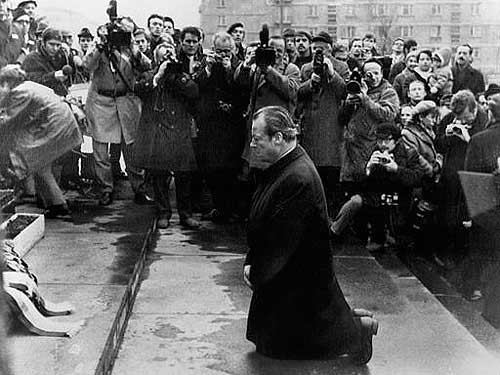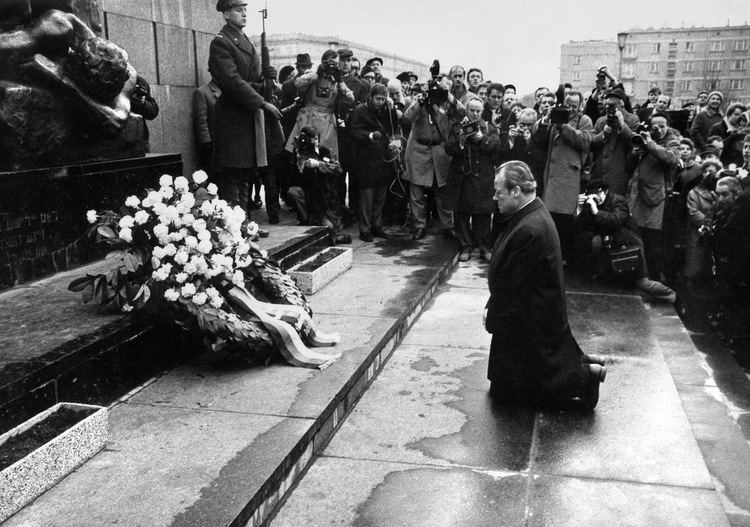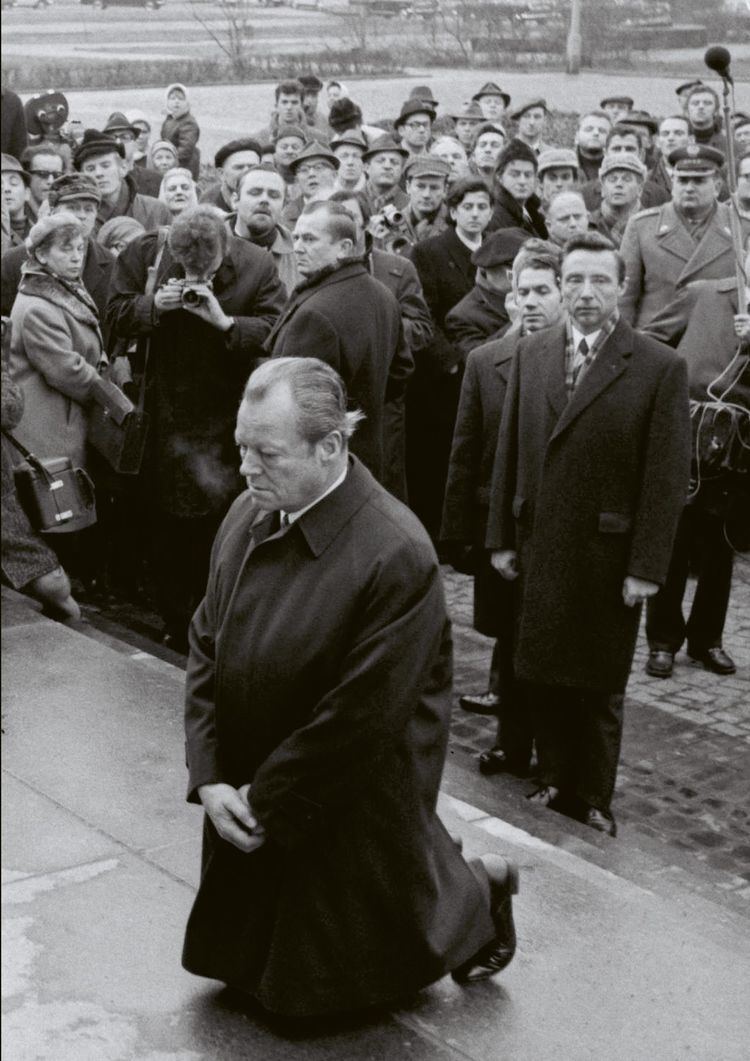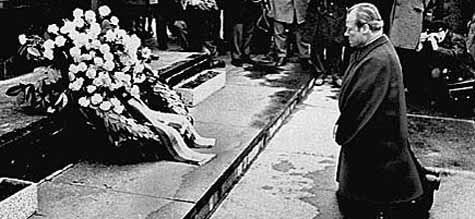Date 7 December 1970 | Location Warsaw, Poland | |
 | ||
Willy brandt und der kniefall von warschau genuflection in warshaw
Kniefall von Warschau (German for "Warsaw Genuflection") refers to a gesture of humility and penance by German Chancellor Willy Brandt towards the victims of the Warsaw Ghetto Uprising.
Contents
- Willy brandt und der kniefall von warschau genuflection in warshaw
- Incident
- In Germany
- Internationally
- Brandts memories
- References

Incident
The event took place on December 7, 1970, in what was then the Communist People's Republic of Poland during a visit to a monument to the German occupation-era Warsaw Ghetto Uprising. After laying down a wreath, Brandt, very surprisingly, and to all appearances spontaneously, knelt. He remained silently in that position for a short time (half a minute), surrounded by a large group of dignitaries and press photographers.

Brandt had actively resisted the early Nazi regime, and had spent most of the time of Hitler's reign in exile. The occasion of Brandt's visit to Poland at the time was the signing of the Treaty of Warsaw between West Germany and the People's Republic of Poland, guaranteeing German acceptance of the new borders of Poland. The treaty was one of the Brandt-initiated policy steps (the 'Ostpolitik') to ease tensions between West and East during the Cold War.
In Germany

On the same day, Brandt signed the Treaty of Warsaw, which acknowledged the Oder-Neisse-Line as the final German border with Poland. Both actions attracted controversy within Germany, as did Ostpolitik in general, favored only by a narrow majority in public opinion. It was disputed within his own party, whose voters had included a significant proportion of expellees from the formerly German territories in Poland, most whom then went to the conservative parties.

According to a Der Spiegel survey of the time, 48% of all West Germans thought the "Kniefall" was excessive, 41% said it was appropriate and 11% had no opinion. The Kniefall was a symbolic action the opposition tried to use against Brandt, as in a Constructive Vote of No Confidence in April 1972, which Brandt won by only two votes. Brandt's landslide win in the next elections in late 1972 was also due to the growing view among voters that Brandt's Ostpolitik—symbolized by the Kniefall—and his reformist domestic policies were helping to boost Germany's international reputation and should be supported. The SPD won its best federal election result ever.
Internationally

While at the time, positive reactions may have been limited, his show of humility was a small but vital step in bridging the gaps World War II had left between Germany and Eastern Europe. In historical terms, Brandt gained much renown for this act, and it is thought to be one of the reasons he received the Nobel Peace Prize in 1971.
A monument to Willy Brandt was unveiled on 6 December 2000, in Willy Brandt Square in Warsaw (near the Warsaw Ghetto Heroes Monument) on the eve of the 30th anniversary of his famous gesture.
Brandt's memories
Brandt was repeatedly interviewed about the genuflection and about his motives. He later noted that:
(German original) "Unter der Last der jüngsten Geschichte tat ich, was Menschen tun, wenn die Worte versagen. So gedachte ich Millionen Ermordeter." (English translation) Under the weight of recent history, I did what people do when words fail them. In this way I commemorated millions of murdered people.